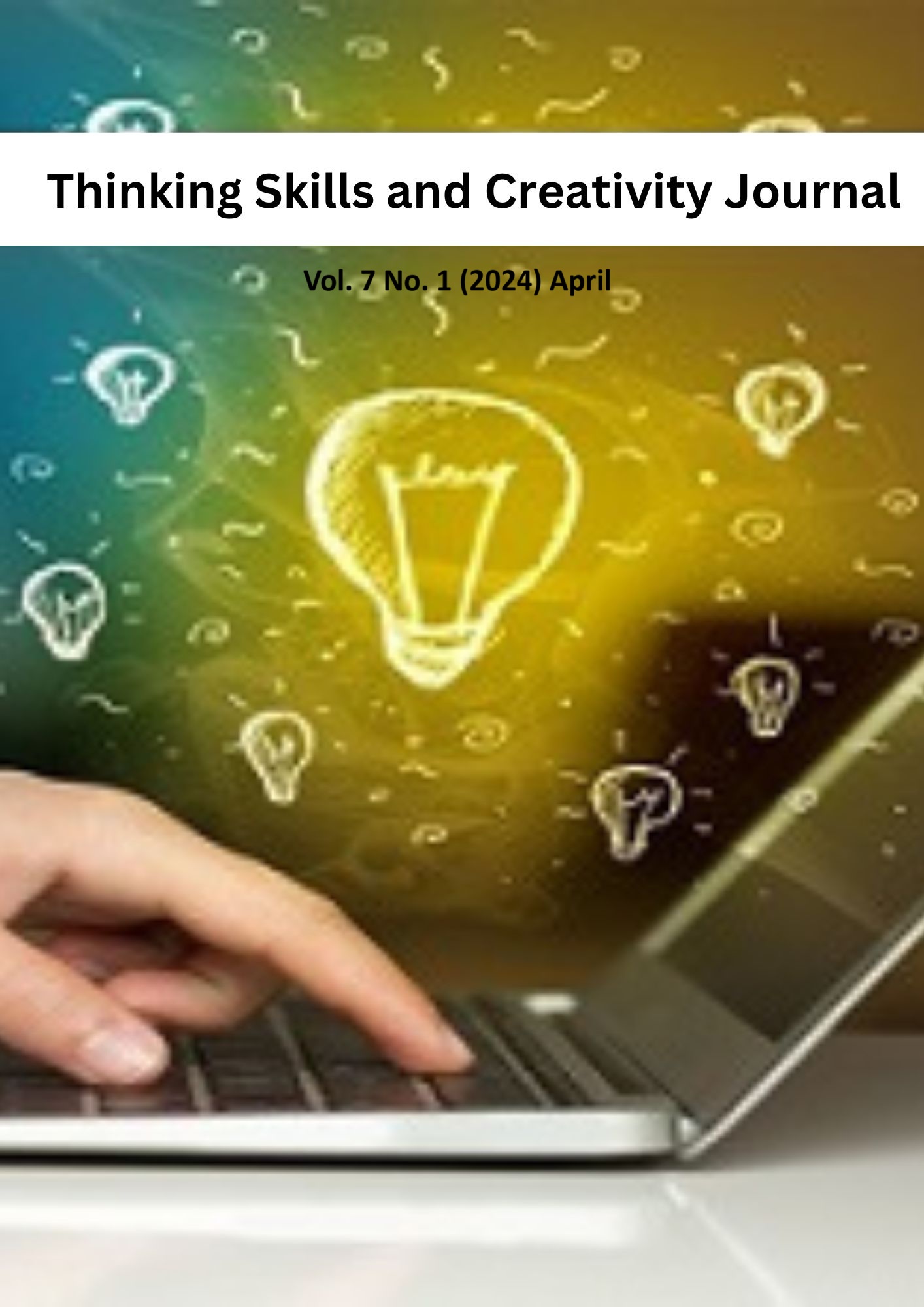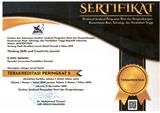Estimating Measurement Invariance on Emotional Intelligence Scale across Gender and Age among Undergraduates
DOI:
https://doi.org/10.23887/tscj.v7i1.78003Keywords:
Psychometric Properties, Emotional Intelligence Scale, Measurement Invariance, Gender and AgeAbstract
Critical concerns in estimating measurement invariance of the Schutte emotional intelligence scale by gender and age among undergraduate students. This research aims to analyze five research questions, which are analyzed using exploratory factor analysis together with a correlation matrix to explain the relationship between the variables studied. This study used a cross-sectional, multi-method, multi-trait research design, drawing on a random sample of 300 first-year undergraduate students selected from three universities. The Schutte Emotional Intelligence Scale, with a Cronbach's alpha coefficient of 0.872, served as the main instrument for data collection. The results showed that the Schutte Emotional Intelligence Scale demonstrated good model fit, as evidenced by the chi-square goodness-of-fit statistic (X^2(220) = 955.19, p < 0.05). This shows that the Schutte Emotional Intelligence Scale shows strong suitability with the model used in this research. However, it is important to consider that the chi-square goodness-of-fit may be affected by sample size, prompting examination of additional model fit indices. Further, within the Nigerian population, 23 out of the 33 items in the Schutte Emotional Intelligence Scale were found to be suitable for individuals in the age range of adolescence and emerging adulthood.
References
Al Mamun, M. A., Lawrie, G., & Wright, T. (2022). Exploration of learner-content interactions and learning approaches: The role of guided inquiry in the self-directed online environments. Computers & Education, 178, 104398. https://doi.org/10.1016/j.compedu.2021.104398.
Alavinia, P., & Ebrahimpour, S. (2012). On the Correlation between Emotional Intelligence and Learning Styles: The Case of Iranian Academic EFL Learners. Theory & Practice in Language Studies, 2(6). https://doi.org/10.4304/tpls.2.6.1291-1299.
Alfonso-Benlliure, V., Motos Teruel, T., & Lee Fields, D. (2021). Is it true that young drama practitioners are more creative and have a higher emotional intelligence? Thinking Skills and Creativity, 39. https://doi.org/10.1016/j.tsc.2021.100788.
Ayanlade, A., & Jegede, M. O. (2016). Climate Change Education and knowledge among Nigerian University Graduates. Weather, Climate, and Society, 8(4), 465–473. https://doi.org/10.1175/WCAS-D-15-0071.1.
Badaru, K. A., & Adu, E. O. (2022). Platformisation of Education: An Analysis of South African Universities’ Learning Management Systems. Research in Social Sciences and Technology, 7(2), 66–86. https://doi.org/10.46303/ressat.2022.10.
Bai, B., Shen, B., & Mei, H. (2020). Hong Kong primary students’ self-regulated writing strategy use: Influences of gender, writing proficiency, and grade level. Studies in Educational Evaluation, 65(August 2019). https://doi.org/10.1016/j.stueduc.2020.100839.
Bailey, R. W., Wolfson, C. A., Nall, J., & Koyani, S. (2009). Performance-based usability testing: Metrics that have the greatest impact for improving a system’s usability. Heidelberg. In International Conference on Human Centered Design, 3–12. https://doi.org/10.1007/978-3-642-02806-9_1.
Barkhordari, M., Rostambeygi, P., & Ghasemnejad, M. (2016). Measuring emotional intelligence of nursing student. Iranian Journal of Nursing Research, 10(4), 12–19. http://ijnr.ir/article-1-1623-en.html.
Cebollero-Salinas, A., Cano-Escoriaza, J., & Orejudo, S. (2022). Social Networks, Emotions, and Education: Design and Validation of e-COM, a Scale of Socio-Emotional Interaction Competencies among Adolescents. Sustainability (Switzerland), 14(5). https://doi.org/10.3390/su14052566.
Cindy, E., & Silver, H. (2016). Problem-Based Learning: What and How Do Students Learn? Educational Psychology Review. Springer, 16(3), 235–266. https://doi.org/10.1023/B:EDPR.0000034022.16470.f3.
Cong, W., & Li, P. (2022). The Relationship Between EFL Learners’ Communication Apprehension, Self-Efficacy, and Emotional Intelligence. Frontiers in Psychology, 13, 294. https://doi.org/10.3389/FPSYG.2022.847383/BIBTEX.
Creswell. J.W. (1999). Mixed-Method Research: Introduction and Application. In Handbook of Educational Policy (pp. 455–472). https://doi.org/https://doi.org/10.1016/B978-012174698-8/50045-X.
Dudek, J., & Heiser, R. (2017). Elements, principles, and critical inquiry for identity-centered design of online environments. Journal of Distance Education, 32(2), 1–18. https://search.proquest.com/openview/36da03443bbbdec42efcb9d7d1ceb2d8/1?pq-origsite=gscholar&cbl=446313.
Dunn, K. E., & Mulvenon, S. W. (2009). A critical review of research on formative assessments: The limited scientific evidence of the impact of formative assessments in education. Practical Assessment, Research, and Evaluation, 14(1), 7. https://doi.org/10.7275/jg4h-rb87.
Elmahdi, I., Al-Hattami, A., & Fawzi, H. (2018). Using Technology for Formative Assessment to Improve Students’ Learning. Turkish Online Journal of Educational Technology-TOJET, 17(2), 182–188. https://eric.ed.gov/?id=EJ1176157.
Esmaeelzadehazad, S., Valadi, S., & Gabbard, C. (2021). The impact of maternal emotional intelligence on young children’s motor development. European Journal of Developmental Psychology, 00(00), 1–17. https://doi.org/10.1080/17405629.2021.1918094.
Fearnley, M. R., & Amora, J. T. (2020). Learning Management System Adoption in Higher Education Using the Extended Technology Acceptance Model. IAFOR Journal of Education, 8(2), 89–106. https://doi.org/10.22492/ije.8.2.05.
Gnambs, T., & Kaspar, K. (2014). Disclosure of sensitive behaviors across self-administered survey modes: a meta-analysis. Behavior Research Methods, 47(4), 1237–1259. https://doi.org/10.3758/s13428-014-0533-4.
Huerta, M., Goodson, P., Beigi, M., & Chlup, D. (2018). Graduate Students as Academic Writers: Writing Anxiety, Self-Efficacy, and Emotional Intelligence. Tourism Recreation Research, 36(4), 19. https://doi.org/10.1080/07294360.2016.1238881.
Kamal, S. S. L. A., & Ghani, F. A. (2014). Emotional Intelligence and Akhlak among Muslim Adolescents in one of the Islamic Schools in Johor, South Malaysia. Procedia - Social and Behavioral Sciences, 114, 687–692. https://doi.org/10.1016/j.sbspro.2013.12.768.
Méndez-Giménez, A., Cecchini, J. A., & García-Romero, C. (2020). Profiles of emotional intelligence and their relationship with motivational and well-being factors in physical education. Psicologia Educativa, 26(1), 27–36. https://doi.org/10.5093/PSED2019A19.
Murphy, A., & Janeke, H. C. (2009). The relationship between thinking styles and emotional intelligence: An exploratory study. South African Journal of Psychology, 39(3), 357–375. https://doi.org/10.1177/008124630903900310.
Nardo, J. E., Chapman, N. C., Shi, E. Y., Wieman, C., & Salehi, S. (2022). Perspectives on Active Learning: Challenges for Equitable Active Learning Implementation. Journal of Chemical Education, 99(4), 1691–1699. https://doi.org/10.1021/acs.jchemed.1c01233.
Ozdamli, F., & Ozdal, H. (2018). Developing an instructional design for the design of infographics and the evaluation of infographic usage in teaching based on teacher and student opinions. Eurasia Journal of Mathematics, Science and Technology Education, 14(4), 1197–1219. https://doi.org/10.29333/ejmste/81868.
Philippe, S., Souchet, A. D., Lameras, P., Petridis, P., Caporal, J., Coldeboeuf, G., & Duzan, H. (2020). Multimodal teaching, learning and training in virtual reality: a review and case study. Virtual Reality and Intelligent Hardware, 2(5), 421–442. https://doi.org/10.1016/j.vrih.2020.07.008.
Rahim, N. B. (2022). the Interaction Between Teaching Competencies and Self-Efficacy in Fostering Engagement Amongst Distance Learners: a Path Analysis Approach. Malaysian Journal of Learning and Instruction, 19(1), 31–57. https://doi.org/10.32890/mjli2022.19.1.2.
Retnawati, H. (2016). Proving Content validity of Self Regulated Learning Scale (The Comparison of Aken Index and Expanded Gregory Index). Research and Evaluation in Education, 2(2), 155–164. https://doi.org/10.21831/reid.v2i2.11029.
Rincón-Flores, E. G., Mena, J., & Montoya, M. S. R. (2020). Gamification: a new key for enhancing engagement in MOOCs on energy? International Journal on Interactive Design and Manufacturing, 14(4), 1379–1393. https://doi.org/10.1007/s12008-020-00701-9.
Shatalebi, B., Sharifi, S., Saeedian, N., & Javadi, H. (2012). Examining the relationship between emotional intelligence and learning styles. Procedia - Social and Behavioral Sciences, 31, 95–99. https://doi.org/10.1016/j.sbspro.2011.12.022.
Siddiqui, F. A., & Soomro, N. P. (2019). Emotional Intelligence, Occupational Stress, Problem Focused and Active Avoidance Coping Strategies of Female Teachers. Bahria Journal of Professional Psychology, 18(2), 55–70. https://search.ebscohost.com/login.aspx?direct=true&profile=ehost&scope=site&authtype=crawler&jrnl=18160840&AN=142292479&h=vFo2iiIOY%2B1ZgSK%2FRQovJfC1OtNFIePctK32V5yON6SfqK1WLN2afonbVEYNZhoL%2B3CbPdEnnOo%2FiiUxW%2BHkOg%3D%3D&crl=c.
Sukenti, D., Tambak, S., & Siregar, E. (2021). Learning Assessment for Madrasah Teacher: Strengthening Islamic Psychosocial and Emotional Intelligence. . . Al-Ishlah: Jurnal Pendidikan, 13(1), 725–740. https://doi.org/10.35445/alishlah.v13i1.552.
Sutton, A., & Crobach, C. (2022). Improving self-awareness and engagement through group coaching. International Journal of Evidence Based Coaching and Mentoring, 20(1), 35–49. https://doi.org/10.24384/dqtf-9x16.
Taheri, L., & Jadidi, E. (2016). The Relationship between Emotional Intelligence and Learning Strategies among Iranian EFL Learners. Theory and Practice in Language Studies, 6(5), 952. https://doi.org/10.17507/tpls.0605.06.
Vargo, J., Nesbit, J. C., Belfer, K., & Archambault, A. (2003). Learning object evaluation: Computer mediated collaboration and inter-rater reliability. International Journal of Computers and Applications, 25(3), 1–8. https://doi.org/10.1080/1206212X.2003.11441703.
Wallace, T. C. (2022). A strange symbiosis: Seismic ray theory and Saturday touch football — Donald V. Helmberger as a graduate advisor. Earthquake Science, 35(1), 11–13. https://doi.org/10.1016/j.eqs.2022.01.017.
Wang, Y., & Liu, Q. (2020). Effects of online teaching presence on students’ interactions and collaborative knowledge construction. Journal of Computer Assisted Learning, 36(3), 370–382. https://doi.org/10.1111/jcal.12408.
Wechsler, S. M., Saiz, C., Rivas, S. F., Vendramini, C. M. M., Almeida, L. S., Mundim, M. C., & Franco, A. (2018). Creative and Critical Thinking: Independent or Overlapping Components? Thinking Skills and Creativity, 27(November 2017), 114–122. https://doi.org/10.1016/j.tsc.2017.12.003.
Yang, S., Leshchinsky, B., Cui, K., Zhang, F., & Gao, Y. (2021). Influence of failure mechanism on seismic bearing capacity factors for shallow foundations near slopes. Géotechnique, 71(7), 594–607. https://www.icevirtuallibrary.com/doi/abs/10.1680/jgeot.19.P.329.
Young, T., Hazarika, D., Poria, S., & Cambria, E. (2018). Recent trends in deep learning based natural language processing. Ieee Computational IntelligenCe Magazine, 13(3), 55–75. https://doi.org/10.1109/MCI.2018.2840738.








